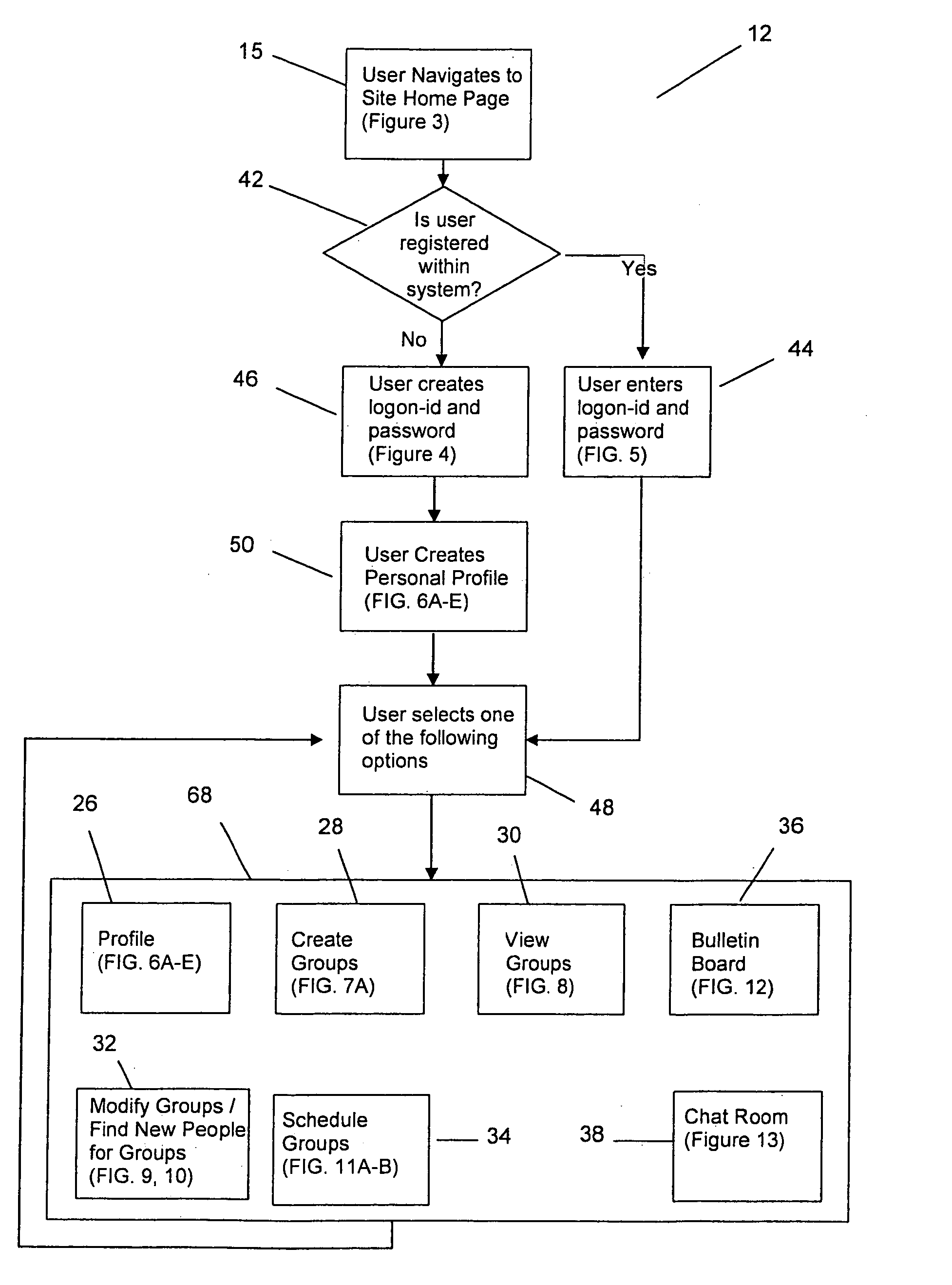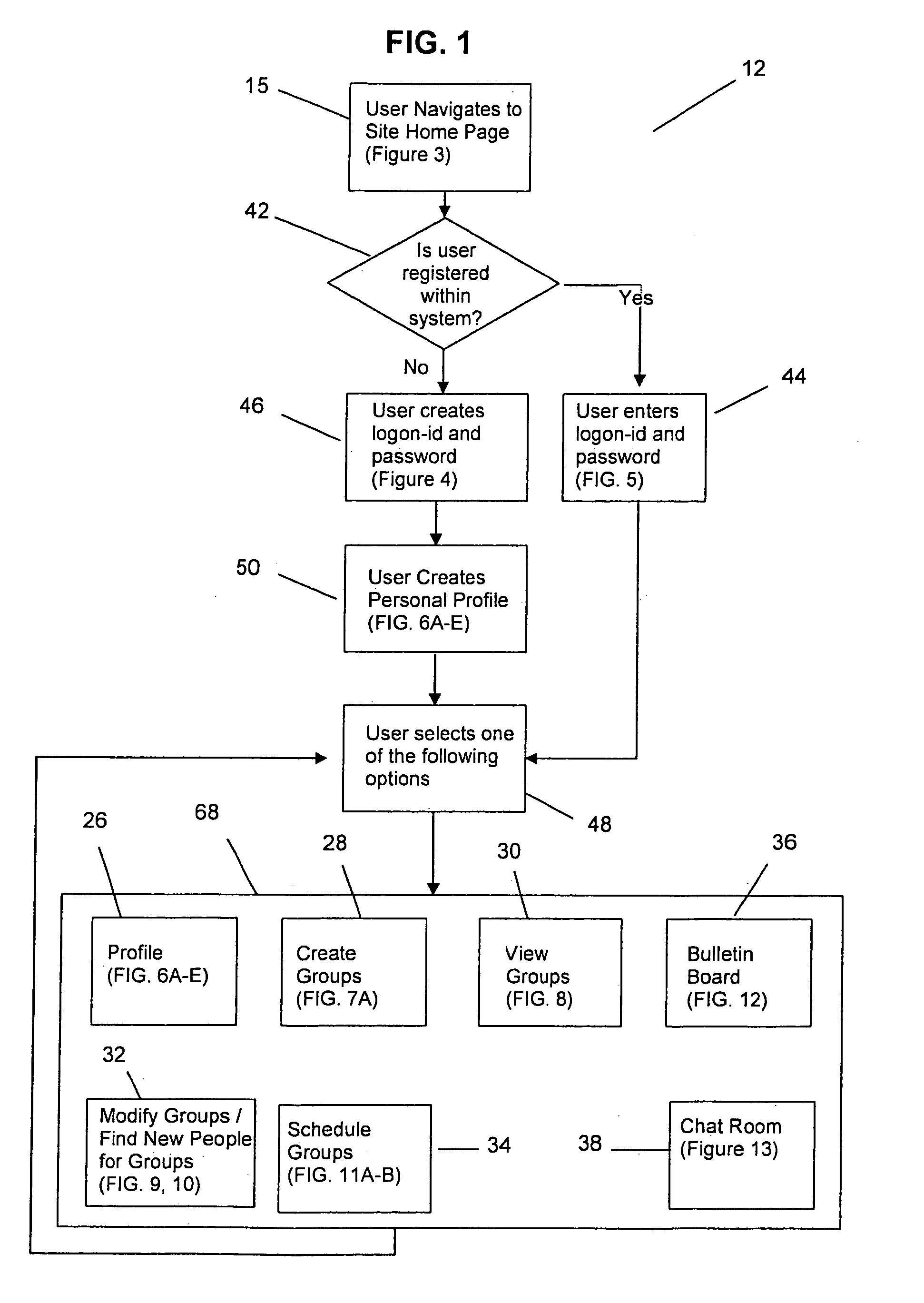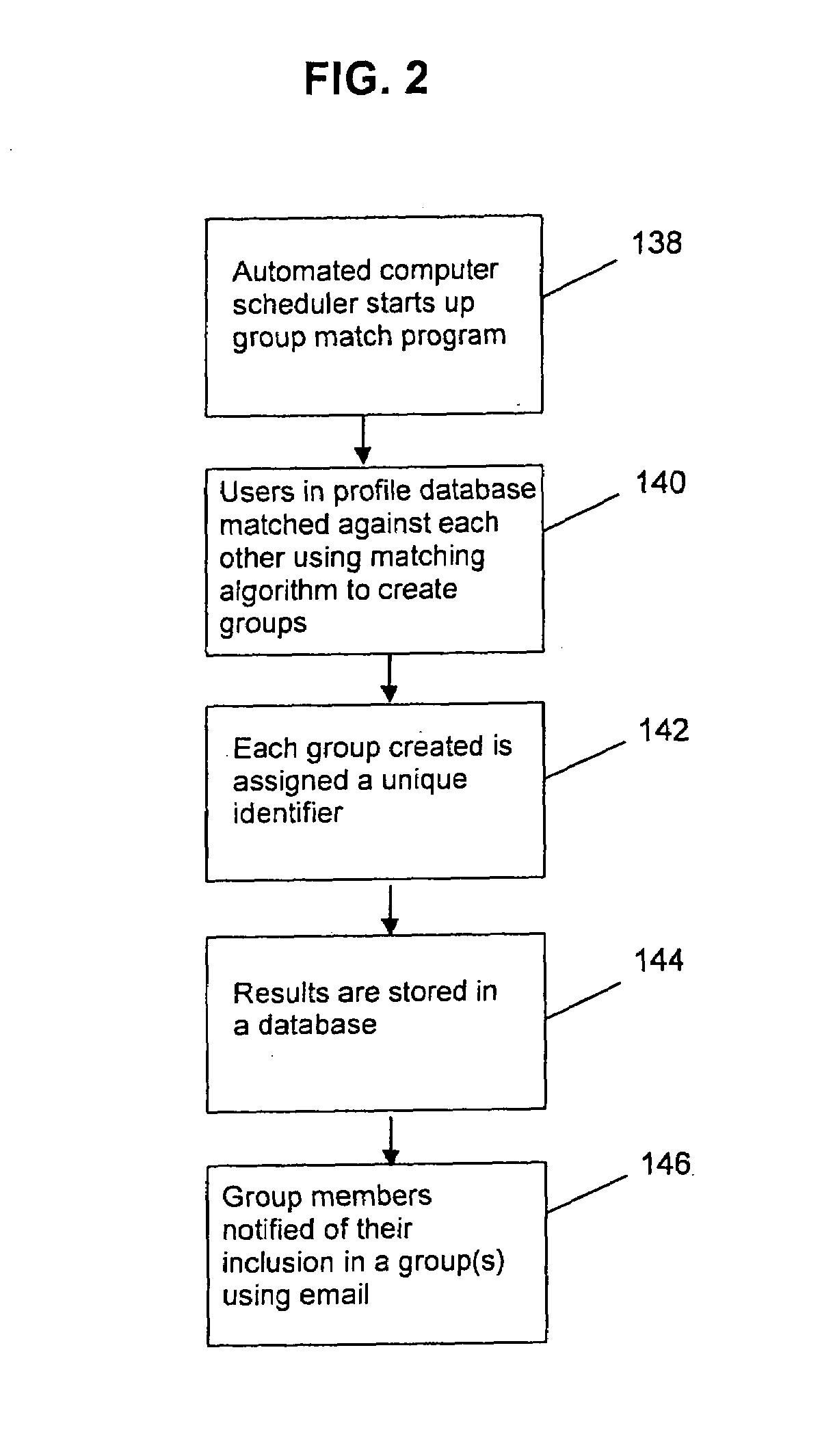Method for grouping computer subscribers by common preferences to establish non-intimate relationships
a computer and preference technology, applied in the field of grouping computer subscribers by common preferences, can solve the problems of largely failing current methods for establishing intimate relationships, time-consuming and difficult process, and difficulty in acquiring and maintaining non-intimate relationships, and it is doubtful that most people would use this one-on-one matching method
- Summary
- Abstract
- Description
- Claims
- Application Information
AI Technical Summary
Benefits of technology
Problems solved by technology
Method used
Image
Examples
Embodiment Construction
[0037]Referring to the drawings, the present invention will now be described in detail with reference to the preferred embodiment.
[0038]As illustrated in FIGS. 1–13, the present invention provides a method for grouping computer subscribers by common preferences to establish non-intimate relationships. The method of the present invention is accessed by a web server (not shown) or a series of web servers (not shown) which are networked in a secured fashion to the internet (not shown). Other alternative configurations to the internet may also be utilized to access the method of the present invention. Those skilled in the art would recognize that other configurations such as a network, LAN, and interactive voice response systems may be utilized as an alternative to the internet.
[0039]In order to access the method of the present invention, the present invention provides a website 12 on the internet. A browser (not shown) may be utilized to access the website 12 provided on the internet. ...
PUM
 Login to View More
Login to View More Abstract
Description
Claims
Application Information
 Login to View More
Login to View More - R&D
- Intellectual Property
- Life Sciences
- Materials
- Tech Scout
- Unparalleled Data Quality
- Higher Quality Content
- 60% Fewer Hallucinations
Browse by: Latest US Patents, China's latest patents, Technical Efficacy Thesaurus, Application Domain, Technology Topic, Popular Technical Reports.
© 2025 PatSnap. All rights reserved.Legal|Privacy policy|Modern Slavery Act Transparency Statement|Sitemap|About US| Contact US: help@patsnap.com



